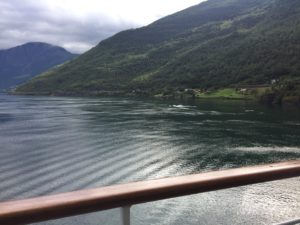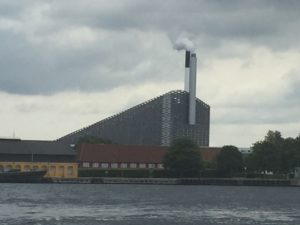 “What is the purpose of your visit?” the English customs officer asked as we approached his window 20 plus years ago on our first visit to Europe. “We’re on vacation,” we said.
“What is the purpose of your visit?” the English customs officer asked as we approached his window 20 plus years ago on our first visit to Europe. “We’re on vacation,” we said.
“Oh, on holiday,” he corrected us. I’m not sure I know the difference between the two even now, but these last couple of weeks I’ve definitely been away from my regular life. Traveling with my husband to several Scandinavian countries we’ve taken a cruise up the coast of Norway and into the fjords, and flown and driven to visit our grandson who is playing soccer this summer in Sweden. That reality was the inspiration for the whole trip.
It sounds easier than it is, to cease and desist working. My “To Do” lists are quite long and there are always multiple projects in various stages of development. When the clock and calendar indicate that I must let them go and pick them up when I return in two weeks, it’s definitely a challenge. I took some files with me, just in case there would be moments to mix some business with pleasure but it’s lucky I didn’t count on this happening. When I felt the energy to reconnect with my work life, the travel schedule or access to technology didn’t cooperate.
The travel brochures don’t mention it but with a six-hour time difference, jet lag is a real thing. We arrived in Copenhagen at 7 am their time, 2 am for us. We disembarked, and in our middle of the night stupor, found the train station, figured out how to buy tickets, where to get off, and which direction to walk to find our hotel. We had only one small mishap, leaving a borrowed tote bag in the overhead storage of the plane. We realized it just after going through customs but this mistake turned into one of the most memorable parts of the trip. We reported our difficulty to the information desk at the airport and they called the gate. The next thing we knew a young man from behind the information counter was on his bicycle traveling through the terminal on our behalf. He returned in lessthan 10 minutes with our reclaimed bag.

My visit to parts of Denmark, Norway and Sweden was greatly enhanced by intermittently dipping into a book recommended by a Pittsburgh friend who had just returned from the region. British author, Michael Booth’s “The Almost Nearly Perfect People: Behind the Myth of the Scandinavian Utopia” explored the notion that on multiple self report measures, people in these countries turn out to be the happiest in the world. As Booth paraphrased Lady Bracknell, “to win one happiness survey may be regarded as good fortune, to win virtually every one since 1973 is convincing grounds for a definitive anthropological thesis.”
Moving through small villages and medium and large towns I found evidence for much of what Booth was pointing out from his experiences living and interviewing people in each of the countries. In spite of punishing weather, extremely high taxes, and an uninspired diet of fish, sweet rolls, and beer, Scandinavians find happiness supporting one another socially and financially from cradle to grave, taking frequent time away from work, recreating on weekends with family members at summer cottages, respecting, protecting, and staying close to nature, and honoring and practicing ancient and modern art forms.
In visiting the historical amusement park, Tivoli in the center of Copenhagen, we found it outfitted with features for people of all ages. Besides the modern amusement rides for kids and teenagers, there were beautiful gardens, restaurants and an amusing, artfully costumed ballet performance of Cinderella that had me laughing out loud.
We visited the inland city of Orebro, the 115,000 person Swedish town where my grandson is living. Instead of finding a dull backwater town as I had expected, I was delighted by a vibrant city, awash in art instillations in every nook and cranny of the city as they celebrated their 6th annual OpenArt Festival. http://openart.se/2017/en/about-openart/
The primacy and beauty of design in modern architecture had me photographing container buildings, green roofs, and intricate tile surfaces – even the enormous waste composting plant on the waterfront in Copenhagen. Instead of being an eyesore on the riverbank, when completed it will be covered with green vines in the summer and an active ski slope in the winter.
As traveling often does, I found myself making comparisons to my home country. The nearly religious fervor for protecting the environment in the three Nordic countries we visited had me feeling embarrassed to say I live in the U.S. The large middle class, and the lack of extreme poverty in these counties reminded me of a former time in the U.S. when our country felt “great “ to more of our citizens. I’m betting that the state of happiness in these countries is affected by their emphasis on gender equality, consensus building, and looking out for the common good, all values that I personally hold dear. I’m not ready to move to Scandinavia, but I’d love it if we could imitate more of what they do.

